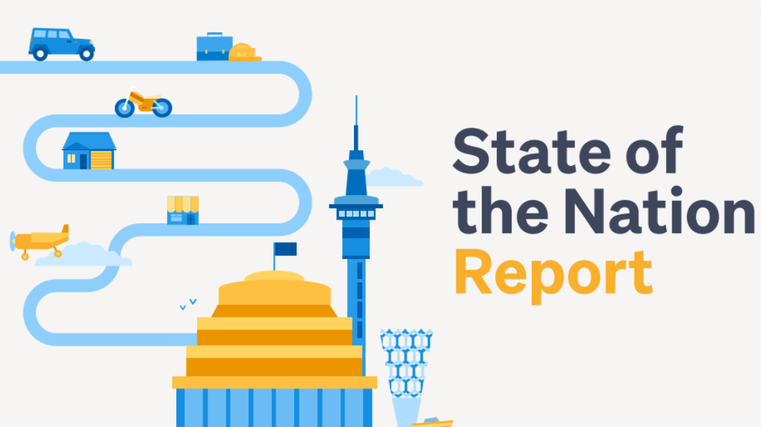Affordability key in market

Many more New Zealanders are planning to buy second-hand vehicles rather than new with affordability being the word on everyone’s lips.
That’s the view of Jeremy Wade and Alan Clark, heads of classifieds at Trade Me, and while hybrid and electric vehicles (EVs) are growing in popularity, “petrol is still winning, for now”.
In the company’s report on the state of the nation, they add that while active vehicle and home buyers are planning to move on purchases, consumers are willing to compromise to not break the bank.
“Car buyers are also compromising on the make and model to get the car that meets their budgets,” they say.
“We had encouraging feedback from the UK motor trade that the demand for EVs is expected to outstrip supply for some time to come. We’re certainly seeing strong interest in electric and hybrids here, especially in the North Island.”
Buying intentions
Trade Me’s survey for its report on the state of the nation was conducted in January and collates answers from 2,198 individuals. Respondents were a sample of members active on the property, motors or jobs verticals in the previous 12 months.
Of those who took part, 21 per cent said they intend to buy a second-hand vehicle this year compared to 27 per cent in 2022. Five per cent intend to buy a new car this year compared to nine per cent last year.
Some 29 per cent plan to pay for their next vehicle with finance, while 42 per cent are willing to travel further for the right car to stay within budget. Other survey results include:
• 32 per cent will consider of the type of vehicle, such as make and model, 13 per cent its age and 13 per cent its condition to stay in budget.
• 42 per cent are planning to buy petrol vehicles, 38 per cent hybrid, 11 per cent electric and eight per cent diesel.
• 32 per cent say their motivation for buying an EV or hybrid is that they are more economical to run, 30 per cent say it’s because they are environmentally friendly and 27 per cent cite the high cost of filling up at the pump.
Online visibility
Trade Me’s report says a digital presence has always been important but as Kiwis grapple with an affordability crisis, the need to stand out is greater than before. Businesses with consistent online profiles will be in a stronger position to weather the storm to come for two main reasons.
New Zealand is a national market. Now more than ever, Kiwis are happy to look outside of their current locations for the right house, vehicle or job.
Price sensitivity is driving a slower path to purchase. Rising interest rates, inflation and the cost of living are influencing the decision-making process. In a cool market, consumers can spend more time researching what’s right for them. People are spending an average of eight hours a day online.
Looking ahead
Jayme Fuller, Trade Me Motors’ sales director, notes “2023 has started under the lingering shadow of 2022”.
She says: “Stock-sourcing challenges and a decrease in sales post-Covid lockdowns are hindering the market for many. On top of this, rising interest rates, inflation and a change in consumer confidence has resulted in a sharp U-turn in buyer intentions.”
Fuller believes the buzzword for this year will be change. “The clean car discount is still impacting buyer and seller habits as EVs continue to climb in preference and price. As a result, new cars have become viable for many who hadn’t previously considered them.
“Coupled with the introduction of the clean car standard, further significant changes will impact the industry this year. Things have changed dramatically and there’s no let-up in sight. Stock make-up will be one to keep a close eye on.
“Appealing to your target market while juggling ever-evolving legislative changes and supply channels will be a big challenge for dealers over the next 12 months. One thing is clear – don’t wait for things to return to ‘normal’ as that’s now one for the history books. Success will be for those who adapt quickly.”
Expenditure crunch
In Trade Me’s report, Brad Olsen, Infometrics’ principal economist, says the spending crunch is hitting the car market, although regulatory changes are driving a sustained shift in focus for vehicles.
“Recent catastrophic weather events will provide a short-term boost to used-car purchases with the hunt on for anything that hasn’t been waterlogged,” he says.
“But used cars remain difficult to source and there are stronger incentives that make new cars more attractive than before. Increasingly, the clean car discount is seeing Kiwis move away from used, large vehicles towards new, small vehicles.
“The focus has also moved to more electric and hybrid vehicles as fuel prices remain high, incentives for these vehicles remain persuasive and as climate change becomes a reason of rising importance in purchasing decisions.”
Market statistics
During the fourth quarter of last year, median prices went up across the board on Trade Me Motors with double-digit increases across most categories. Average prices went up by 10 per cent to $15,345 for used and $52,990 for new.
The final quarter of 2022 saw a “positive increase” in supply for new cars after prolonged pandemic manufacturing delays. That said, falling consumer confidence saw demand “take a tumble” compared to the previous year.
For used cars, supply and demand dropped by 16 and 37 per cent respectively. For new, supply climbed by 18 per cent on the back of demand falling by 20 per cent.
As for most popular vehicles by fuel type, petrol was the Holden Commodore, diesel was Toyota’s Hilux, hybrid was the Toyota Aqua and fully electric was Nissan’s Leaf.
Higher prices at the pump along with a desire to be greener are impacting the types of vehicles people are looking to buy. For those happy to spend, an EV is top of the list, but it’s not just city folk keen to make the switch.
Growth in demand by fuel type when 2022 is compared to 2021, dropped by eight per cent for diesel and by 10 per cent for petrol. Increases were seen in electric, hybrid and plug-in hybrid (PHEV) by 53, 30 and 119 per cent respectively.
Regions with the highest number of watchlists per listing for EVs, hybrids and PHEVs in 2022 were – in order – Wairarapa, Bay of Plenty, Whanganui, Auckland and Waikato.
Changing times
With Kiwis unable to spend on overseas travel or entertainment during the Covid-19 pandemic, Trade Me Motors saw a spike in demand for vehicles in 2021.
As living costs have increased since and consumer confidence dropped, it reports demand for new and used vehicles fell in 2022 compared to the previous year.
When consumers are thinking twice about purchases, it’s not just the dollar amount on their minds but also where they’re buying from.
More cars are selling first time for dealers compared to public-to-public sales. This is likely due to peace of mind when purchasing from a reputable business. Cars sold after the initial listing period comes in at 84 per cent for dealers and 61 per cent for public to public.
Global insights
Auto Trader UK reports the new and used-car markets will be dictated by supply, not demand, in 2023. Like Aotearoa, the UK is also forecast to experience a recession in the year ahead.
However, Auto Trader believes sustained levels of consumer demand will limit the potential impact of any economic downturn. This is due to “the huge backlog of people waiting for a driving test, disruption in public transport, and the combined five million lost new and used-car sales that still leave a level of unsatisfied pent-up demand in a market that’s been constrained by supply”.
EVs remain high on buyers’ lists, with such models being the fastest-selling fuel type in the UK’s used-car market. Based on the latest projections from Auto Trader, there will be more than one million EVs on UK roads by 2024, up from fewer than 400,000 at the end of 2021. By 2030, more than half of all cars less than five years old will be electric.
As for Australia, supply issues also continue to impact the industry although there may be light at the end of the tunnel.
Cameron McIntyre, managing director of Carsales.com, says: “There are encouraging signs the market is starting to correct itself. While supply hasn’t quite right-sized yet, manufacturers are starting to land greater numbers of the cars that Australians want.”
However, demand for EVs is expected to outstrip supply for some time to come. All of this means Carsales.com.au expects to see growth this year as pent-up demand for new vehicles gets closer to being resolved.
Click here for an infographic featuring insights from Trade Me’s 2022 State of the Nation Report and to access the full report.





